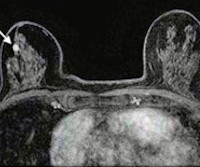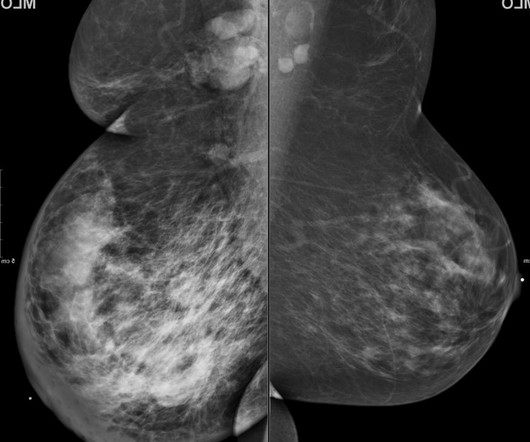Abbreviated MRI suitable in subsequent screening of dense breasts
AuntMinnie
MAY 22, 2024
(B) Axial subtracted contrast-enhanced fat-suppressed T1-weighted image from a subsequent-round abbreviated MRI examination performed two years later shows a new 5-mm enhancing mass in the upper outer right breast (arrow), which was not seen on a mammogram performed five months prior. The exam was assessed as BI-RADS category 5. PPV2 21.3%











Let's personalize your content